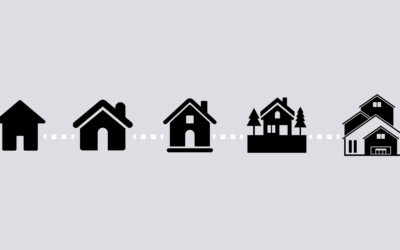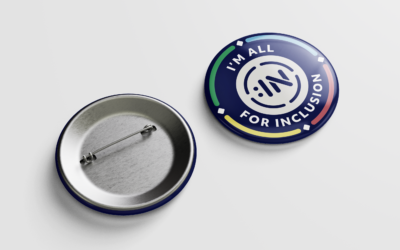Natural History Museum of Los Angeles; Permanent installation in the Otis Pavillion Nature Lab; Art Direction by Kim Baer, KBDA and Senior Project Manager Jennifer Morgan, NHM
When did you know that you wanted to pursue art and illustration professionally? What was one of your most memorable early projects?
I had a fantastic high school art teacher, Eric Hoover, who really pushed me to pursue art in college. I attended Maryland Institute College of Art (MICA) and studied with some wonderful teachers: Whitney Sherman, James Yang and Ken Krafchek. During that time, my painting instructor Ken Tisa connected me with his friend, the amazing artist and illustrator Ruth Marten, who I visited in NYC. She was so giving of her time and knowledge. It had a massive impact on me and I began to see a path toward a life that I wanted to live as both an illustrator and artist.
My first professional illustration job…I believe it was a black and white spot illustration for the Baltimore City Paper. I can’t recall the essay, but I remember I drew a tiny knight on a horse fighting a collage of words/ images (it was the 90’s). Baltimore was a good place to be as an illustrator – it was close to DC and all the trade associations and design studios (who did design work for them) and close to NYC for strategic visits. Mostly though, Baltimore was good because it was cheap. I could work as an illustrator full time, develop my work and pay off student loans. Once I did, I moved to NYC.
How does your background as an art director influence your work as an artist?
I try to frame the conversations on projects to be about collaboration so that everyone responsible for “creating” has equal footing and opportunity to share opinions. It makes for more trust and better projects. Work “with” people rather than “for” people – this goes for the clients as well as the assistants that work with me.
As far as the making of the work, I’m a lot more aware that my images coexist alongside other pieces of design architecture on the page. I suppose I’m a bit more conscious of the “volume” of my work- should it be loud (bright/ busy) or more quiet (simple/ minimal color). Demonstrating this awareness, even in the sketch phase may help build more trust with the Art Director too – they understand that you understand.
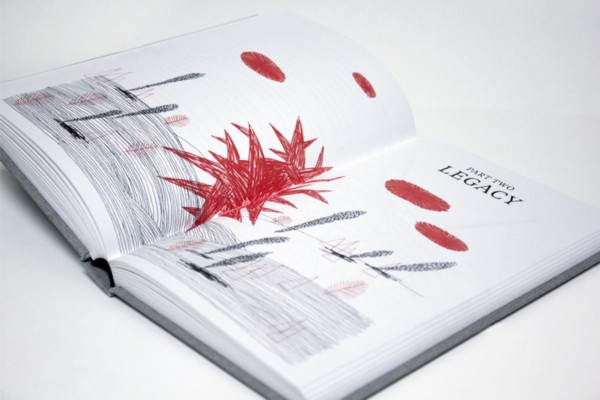

What is your process for creating illustrations for The New York Times Modern Love column? Your illustrations so beautifully represent the essays you’re working with – what are some of the challenges with creating art to accompany pieces of writing?
I generally read the essay over the weekend and think on it for two days before sketching. Relationships are of course complicated and the Modern Love essays can be quite heavy at times. Part of my role is first to understand what the writer is trying to convey in tone. I begin by making lists – I write words that distill the writer’s essay/ thoughts into a simpler visual “language” in my “voice.” From there, I can begin to sketch. I think about the moments the author describes, what they might “feel” like and I try to create images that capture or demonstrate those emotional moments of the essay. Things like joy, sadness, isolation, the way two people look at each other and the tension between them… if I can match that in the final work, I feel like I’ve done my job. I never try and repeat what the author describes – there’s no value added in that. Rather, I try to create a parallel story for the reader – I know that’s perhaps counter to how illustration is often commissioned however, my editors and art directors support this approach. They’ve been really wonderful to work with and allow me that room. Hopefully the readers enjoy this approach too.
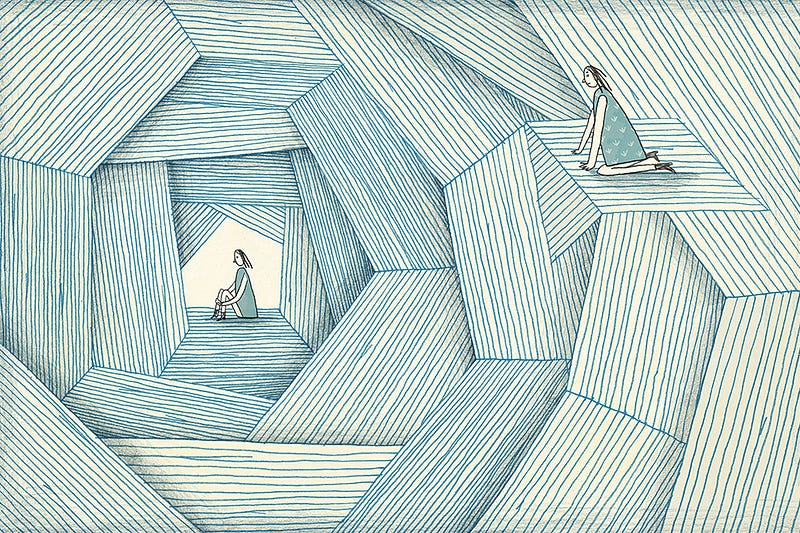
Your illustrations have a very distinct style – how have your aesthetic and the mediums you prefer to use to create your work changed over time?
My early work was a bit of a cloudy mess of ideas and execution – a lot of collage/ mixed media, pen and ink and doing most any project that came my way. I was still searching for my marks and the types of essays I was ideally suited to illustrating. It took time to understand this, though. I spent my days “illustrating” mostly for business magazines, then nights and weekends I drew in my sketchbook – mostly pen and ink pieces of the people and places in my neighborhood. It was causing a split personality in my work. I showed the drawings to some AD’s I respected and I began getting new kinds of projects- more narrative based work in the casual drawing style. Eventually drawing overcame the other directions and I began promoting this more personal direction. I found that the less I added in the images, the more emotional impact the pieces became.
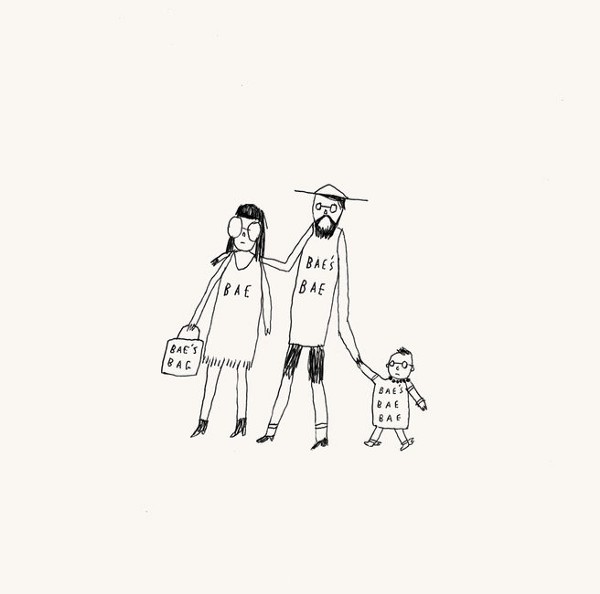




Pieces like your “Visions and Fears” murals, “Beauty,” “Happiness,” and “Pain,” are such powerful examples of conveying emotions visually. How do you approach projects like this?
These are large format paintings, but initially they start out simply as lists – inventories of emotions or themes. I tend to keep each list for a certain period of time (6 months, 1 year, etc.) in a sketchbook – this forces me to consider how much material I’m gathering- and whether I have enough to “build” with. The words are then organized into a “framework” that often supports or enhances the theme of each piece. They feel more like walls of words rather than drawings or paintings – I suppose they’re somewhere in the middle of all three. You can’t sit and read them as you would a book, but the organization and placement of the words can create interesting and unusual juxtapositions on macro and micro levels.
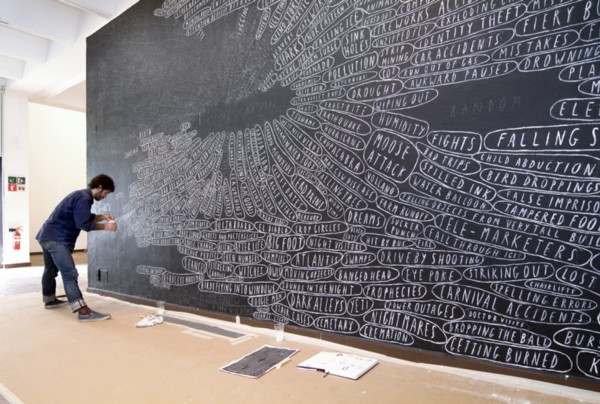




How do you stay inspired and where do you look for inspiration?
I don’t believe in creative blocks, but like most people, when things get busy I get stuck on my island (in the studio) and don’t leave. I’ve learned that’s not healthy. It’s good to leave it now and then. When I do, family, gardening, travel and surfing are the things I know refuel me.
Who are some of your biggest influences?
So many – Olle Eksell, Saul Steinberg, Leo Lionni, George Grosz, George Bellows, Joan Miró, Ben Shahn, Antoni Tàpies, David Park – they were all big influences early on. I still love seeing their work. As far as storytellers/ films go, I absolutely love the work of Roy Andersson and the films of Jacques Tati.
What are some of your favorite design publications/ podcasts/ resources?
I must confess, I don’t read as many design journals as I used to (with a 2 year old running about). Free time is devoted to the studio with occasional breaks to read the news or fiddle through Instagram. I’m perhaps terribly behind on the currency of trends/ culture, but my studio has a big storefront window so occasionally I’ll lift my head up to see what’s going on :). I find I’m happiest with my head down, working.
What advice would you give to designers and illustrators who are just starting out?
Everyone requires different advice, but here’s a good place to start: Find the thing you love more than anything else in the world – then wrap your life around this. This includes your friends/ family (or lovers), your spare time, your space, your home. Make it your life’s work. Without compromise.

Thanks for taking the time to share with us Brian! To see more of Brian’s work, follow @freebrianrea
on Instagram.
All images included with permission from the artist
Want more content like this?
Subscribe to our monthly newsletter, the Noun Gazette.



